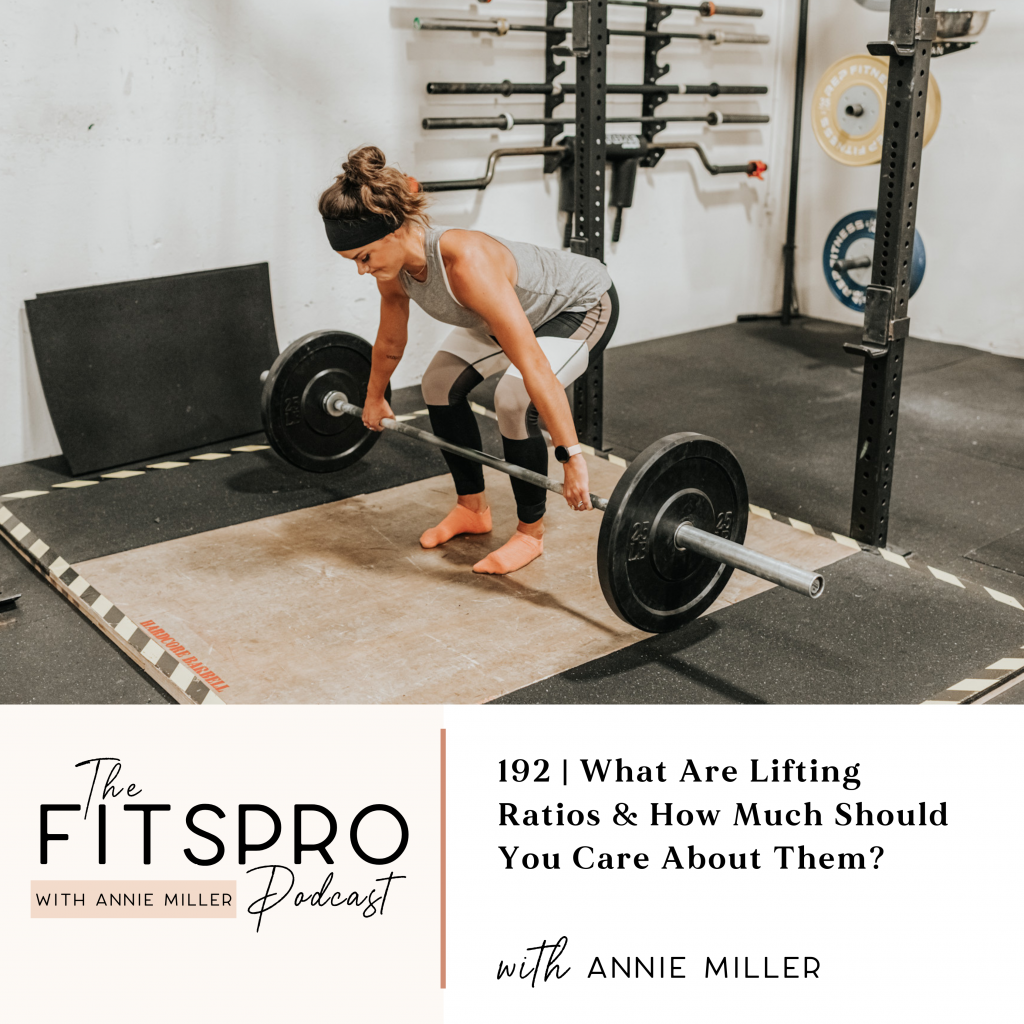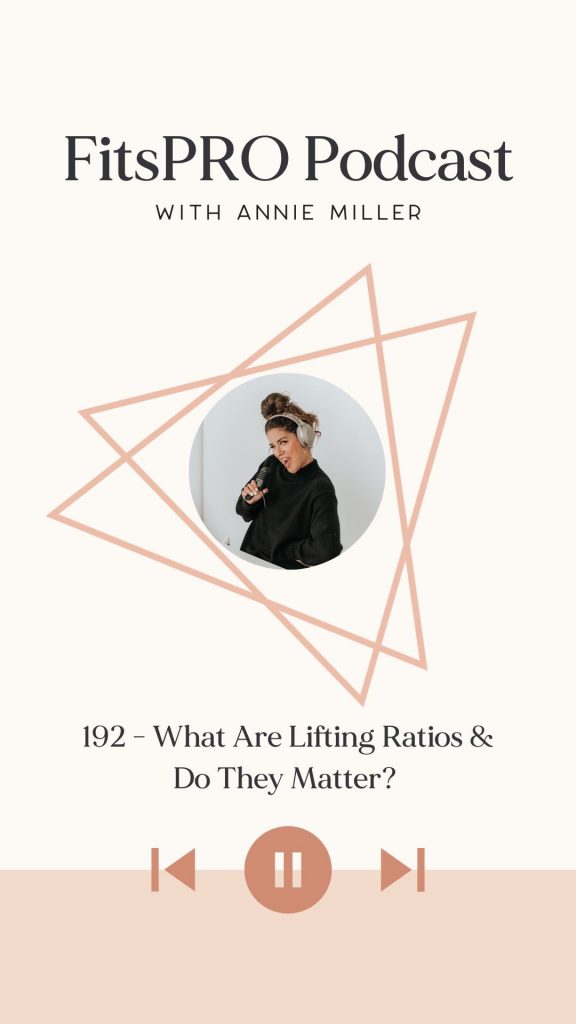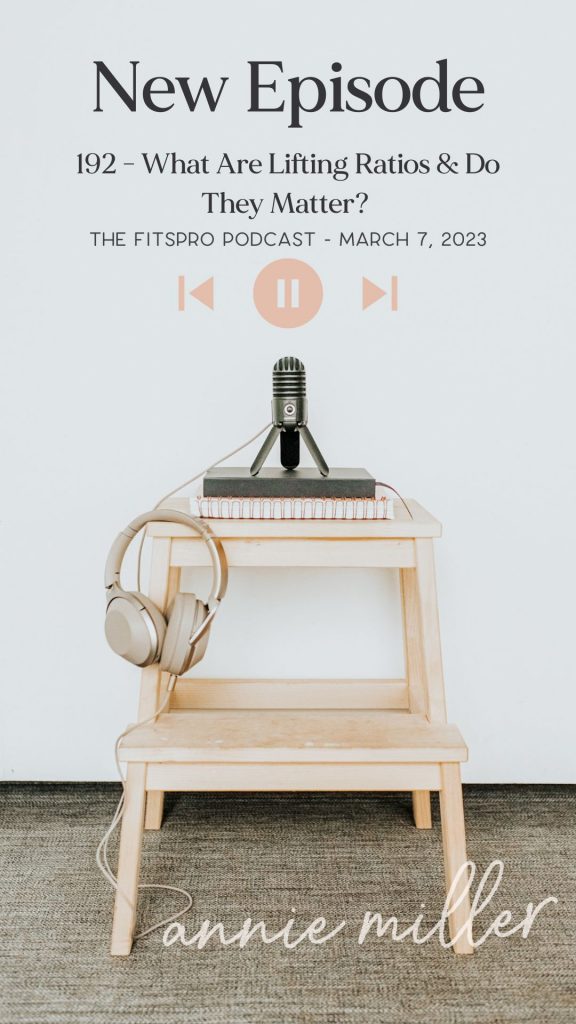the blog
welcome to
looking for something specific? find it here
Podcast: Play in new window | Download (Duration: 18:29 — 25.5MB)
Subscribe: Google Podcasts | RSS

Lifting weights is the best. You know this is my philosophy – that weight lifting and movement is not a season, but something we ideally take part in until our days come to an end. Muscle mass is king, and mobility is arguably also king. We can get both of these via strength training.
BUT, there are certain ratios to be considered in traditional strength training that need to be considered for this long haul journey of slanging weights around.
Today we discuss deadlift, back squat, front squat, step up, pull ups, dips etc – how set ups and strength may be different based on anatomical structure and biases, but can help balance the body and prevent injury.
**Mind you I am not a medical professional and this episode should not take the place of diagnosis or direction from a medical professional. Please consult physical therapists, chiropractors and any other medical professionals before making changes to your training.**
For instance in Pure PROgramming, I give coaches options for different assessments they can independently research and use with their clients. Some require further certification and training. But would totally be within their scope if certified. Today we are discussing general standards and metrics for strength and strength balance between movements and sides of the body.
When programming for the masses (templated program) vs individual, it can be beneficial to think “balanced” + “common issues & desires” of whomever you’re programming for. Very generally speaking, that might look like:
Hinge – 2-3 (Main lift and accessory patterns)
Squat – 2 (Main lift and accessory patterns)
Push – 2 (vertical and horizontal)
Pull – 2 (vertical and horizontal)
Carry 1
**or similar ratios to these – again “balanced”
These are your areas of focus for volume of each pattern per week. Think very broad. Don’t stress, this isn’t going to make or break your progress over a decade if some programming doesn’t fall perfectly in these ratios.
So, how did I come up with that?
Well, first off…hinging (deadlift) should be stronger than squatting patterns, so potentially more focus there. And then, I’d speculate after years of training humans in person, online, in the athletic space, and gen pop, that most people are “quad dominant” and have weak posterior chains overall. Or at least a lack of awareness in the posterior chain. So hinge gets two to three points of focus, squatting gets two, and we balance out vertical and horizontal pressing and pulling. Then have at least one day of a carry variation for good measure. But would be VERY open to two or three, as there are so many options. And generally core work is needed – whether in the form of a carry or not. Remember to also think of patterns vs one exercise.
I throw in hip thrusts with hinging. Hinging is not restricted to deadlifts only. Right? WE have options my friends.
When I say “points of focus” I mean large compound movements per week. That can be unilateral or bilateral, but a compound, heavily loaded version of those patterns is being hit for “that” number per week.
Thus, you’ve identified a “balanced” program, and that’s lovely. Nothing wrong with that. It’s how I largely structured my signature Built By Annie Program. But, please feel free to think about how you could choose or create a training split that favors vertical pulling for a phase, or posterior chain work, or squatting patterns and targeting the quads, or even core work! This is all game. This is all okay!
For a females, these are what I consider to be decent strength standards from novice to advanced (based on working with and observing women over a decade from college athletics to crossfit and gen pop):
Take them with as many grains of salt as you see fit.
Advanced Women
- 2 x body weight back squat
- 1 x body weight bench
- 2.5 x body weight deadlift
- 75% body weight overhead press
Intermediate Women
- 1x body weight back squat
- 80-100% body weight bench
- 1.5 x body weight deadlift
- 60% body weight overhead press
Novice Women
- <60% body weight back squat
- <70% body weight bench
- 70-80% body weight deadlift
- <50% body weight overhead press
When you couple strength standards with the ratios you “should” be able to perform for deadlift vs back squat etc, it can get murky. Don’t stress too much. That’s why I shared the generalized, broad view of need to know standards for most humans:
- Humans are generally stronger pulling than they are pushing and/or in the eccentric vs concentric
- Humans have a larger capacity for strength in horizontal pressing than vertical pressing
- Generally speaking, reps performed at any weight on both legs should be equal, same goes for single arm overhead press and single arm row. We want to balance strength and capacity imbalances side to side.
This is how we address strength imbalances in a VERY simple way within your program design. Now, we don’t have these findings if an assessment was not given. But you can find this out in your own program design or practices.
Now we have a good idea of what it looks like to generally achieve strength balance throughout the body. That IS important for the long haul. But also remember that these numbers are not definite. We see this across athletics all the time. Some people are just made for deadlift or made for squats and their strength numbers will demonstrate that. Maybe they have a much larger gap between deads and squat numbers. Maybe it’s much closer. Not the end of the world. If squats are stronger than deads, then we likely need to work on hinging strength though.
Before choosing exercises comes order of exercises selection
The power of unilateral work for side to side discrepancies
BIG FAN. Huge fan of unilateral work, for a few reasons. I remember when Mike Boyle blew my little baby trainer brain back in 2013/14 with the generalized statement that athletes don’t need to squat bilaterally. I was team “if you can squat you should squat.” While I do still believe everyone should squat, my definition of squat is not restricted to the singular exercise of a “back squat.”
Remember PATTERNS > SINGULAR EXERCISE.
If you’ve never researched Mike Boyle, look him up. In this article Boyle references Kuruganti et al. where the bilateral deficit is described as follows, “The bilateral limb deficit (BLD) phenomenon is the difference in maximal or near maximal force generating capacity of muscles when they are contracted alone or in combination with the contralateral muscles. A deficit occurs when the summed unilateral force is greater than the bilateral force.” [36]
Basically: the sum of strength between two limbs is higher than the strength performed bilaterally. [35][36] Meaning if you train a single leg split squat to max strength, the sum of weight lifted by both legs will be higher than the max strength of a bilaterally performed back squat.
I am not making a claim for or against this, simply showing the potential for unilateral work. And looking at the possibility of unilateral strength gains carrying over into bilateral strength gains.
Unilateral training when loaded and prescribed properly may help to address or mitigate these. Either through assessment or through generalized templated programming.
Most people will have a stronger leg and arm. Might be the same, might be different. Unilateral work can sort that out pretty quickly.
Leave the FitsPRO Podcast a review


If you find value here, on The FitsPRO Podcast, then pretty please head over to iTunes, subscribe, rate and review the show. It means the world to me when you spread my message to more humans.
Want more podcasts? Click here to skim the archives.
P.S. Save this value packed episode for later over on Pinterest!
ALL THE LINKS YOU NEED:
Free On Demand Workshop: 3 Steps To Build a Profitable Online Health and Fitness Business
Supplements: Legion Athletics Code ANNIE for 20% off
Skincare: Fré Skincare Code FDBA for at least 15% off
Bags: Vooray Code ANNIE for 20% off
I'm an adventurous introvert from Vancouver, Washington who lives on sleep + "me time." I'm a lover of lifting weights, dinosaurs, real talk and traveling with my husband. I am here to help you move better, lift more, bust the myths of the fitness industry, and inspire you to love the process.
Hey you,
The name's Annie & you're reading my thoughts. Let's get acquainted.
the whole story >
looking for something specific? find it here
THE LINKS BELOW ARE AFFILIATE LINKS
SKIN CARE
Nutrition
brands I love
working against gravity
Fre skin care
favorites
blue light blockers
klassy network
code: fdba saves you 15% off
online TRAINERS
save $50
code: ANNIE saves you 20% off
You love my style, trust my reviews, and want more Annie Miller Concepts vibes in your life? Shop my favorite brands. You get awesome products and yours truly gets a little kick-back.
